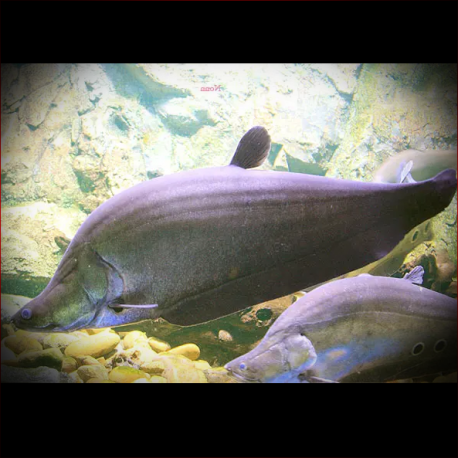More info
Datasheet
| Minimum Tank Size | 10000 litres / 2641.72 US gallons |
| Maximum Size | 150.0cm / 59.06inches |
| Temperature | 22°C / 71.60°F - 28°C / 82.40°F |
| Hardness | 2.02dgH / 36ppm - 15.02dgH / 268ppm |
| pH | 6.0-8.0 |
General Description
Chitala species, commonly known as the Giant Featherback, are members of the Notopteridae family within the Osteoglossiformes order. These elongated fish possess a humped appearance, tiny scales, and the unique ability to breathe atmospheric air. Typically reaching a maximum size of 150.0cm, their distribution spans regions across Africa and Southeast Asia.
Aquarium Setup
Chitala spp. require a large tank size, a minimum of 10000 litres, and should be provided with dim lighting and ample hiding spots such as driftwood, large rocks, or plastic piping (see table). Setting up a mature filtration system, carrying out regular water changes, and ensuring well-oxygenated water is essential for their well-being.
Behaviour
Giant Featherbacks are generally peaceful towards larger tank mates that are not considered prey. However, they can exhibit territorial behavior towards conspecifics and similar species, particularly when space is limited.
Feeding and Diet
As obligate predators, Chitala species primarily feed on smaller fish, crustaceans, and invertebrates in their natural habitat. In captivity, they adapt well to consuming various dead alternatives. Young Chitala can be fed chironomid larvae, small earthworms, and chopped prawns, while adults accept fish flesh, shrimp, mussels, and more. It is vital to avoid feeding them mammalian or avian meat and feeder fish to prevent health issues.
Reproduction & Dimorphism
Details about the reproduction and dimorphism of Chitala species are not provided in the information available.
Habitat and Distribution
These fish are mainly found in the lower basins of main river channels and forested tributaries with rocky and woody substrates. They have also been observed in man-made dams. The Giant Featherbacks are accepted to inhabit regions in Laos, Cambodia, Thailand, Peninsular Malaysia, Sumatra, Borneo, and Java, although some distribution information needs further confirmation.

